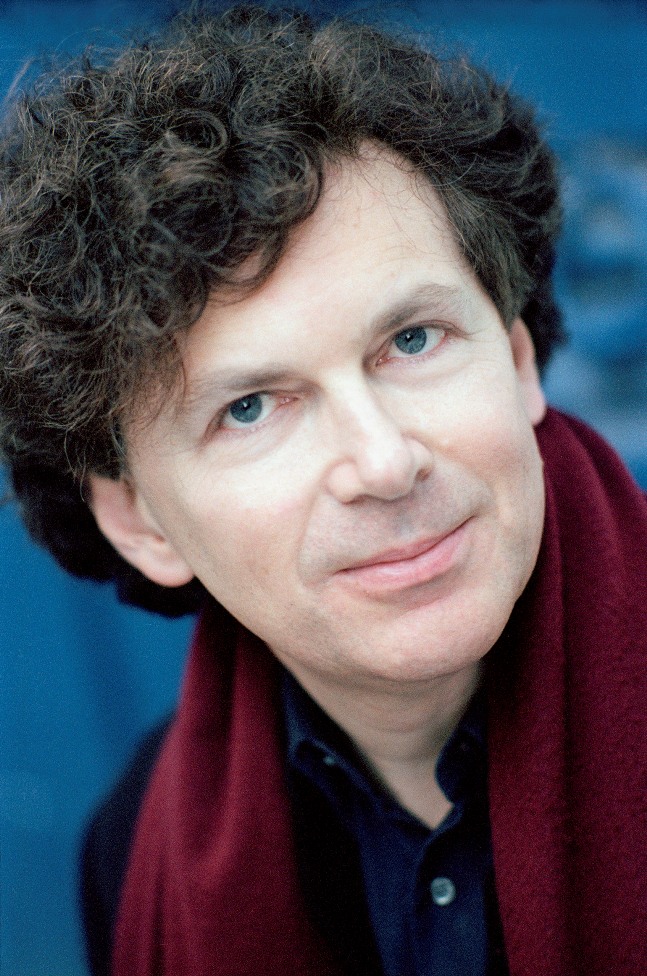Opening It’s All About Piano!, a short but packed festival shared between Kings Place and the Institut français in Kensington, Mikhail Rudy made a rare appearance in the UK. The premise was unusual if hardly revolutionary, a meeting of music and film in which it was not obvious which was the accompanying medium. Was Rudy the silent-film pianist, or were the movies illustrative of latent narratives in Janáček and Musorgsky? Neither. And therein lay the recital’s success.
It was back in 2012 that the Cité de la Musique in Paris commissioned from the Quay Brothers a film adaptation of Kafka’s Metamorphosis with a live soundtrack from Rudy (pictured below), of piano works by Janáček for which he has long been renowned both live and on record. Music and image move with remarkably easy, loose synchrony, though it must be testing of Rudy to ensure that what we hear neither lags behind nor races ahead of what we see. As he has remarked, it seems curious in retrospect that Kafka and Janáček never met, though they were kindred artistic spirits, cutting to the heart of existential anxieties with language in their chosen medium that’s vivid and direct.
 The Quays have worked with music before, making films of Stockhausen and Pärt among others, and their spare, semi-animated retelling gives visual and narrative space to Janáček’s own stories – of a street murder in his early sonata, the Impressionist hues of In The Mists and three pocket tragedies from his cycle On An Overgrown Path. Poor Gregor Samsa is a painfully believable insect, revolting yet piteous, with feelers covered in blood, twitching while doors creak, eyes flick and clocks tick towards an appointed end-time that never quite arrives. In its context, Rudy’s plain touch and slightly irregular rhythm was all the more empathetically apt.
The Quays have worked with music before, making films of Stockhausen and Pärt among others, and their spare, semi-animated retelling gives visual and narrative space to Janáček’s own stories – of a street murder in his early sonata, the Impressionist hues of In The Mists and three pocket tragedies from his cycle On An Overgrown Path. Poor Gregor Samsa is a painfully believable insect, revolting yet piteous, with feelers covered in blood, twitching while doors creak, eyes flick and clocks tick towards an appointed end-time that never quite arrives. In its context, Rudy’s plain touch and slightly irregular rhythm was all the more empathetically apt.
These qualities were displayed to less advantage in Pictures at an Exhibition, where the wit and precision of Rudy’s own animation of drawings by Kandinsky showed up some approximate shots at the quicker movements. Admittedly Musorgsky’s writing is famously unpianistic, even more so than Janáček’s, and each pianist seems to make their own edition, though Rudy’s had fewer notes than most. Why he put himself through the trial of "Tuileries" and the "Ballet of the Unhatched Chicks" for an encore was not obvious, though perhaps second time around failed better, to paraphrase a Beckett maxim that would have drawn a wry smile from Kafka.
In a manner reminiscent of Seventies children’s cartoons from the former Soviet Bloc (remember Ludwig, the robot egg with an internal jukebox that played only Beethoven?), initially flat and unpromising ideas combine and flip up; from lines and spots suddenly emerges a third dimension of situation and response. Lines and stick-men draw the anti-Semitic sting from Musorgsky's portraits of "Two Jews, One Rich One Poor" Goldenberg and Schmuyle and make a good, sympathetic point about individuals marooned by their own prejudices. There have been periodic attempts to get literal with Musorgky’s cycle – I recall a live daubing going on while the CBSO and Sir Simon Rattle played Ravel’s orchestration, a slide-show of Hartmann’s original images like an Open University film, and bizarrely oblique and monochromatic responses from the South African artist Robin Rhode to gussy up a live and recorded presentation by Leif Ove Andsnes. Alongside them, Rudy’s film must be counted a singular and imaginative success.














Add comment